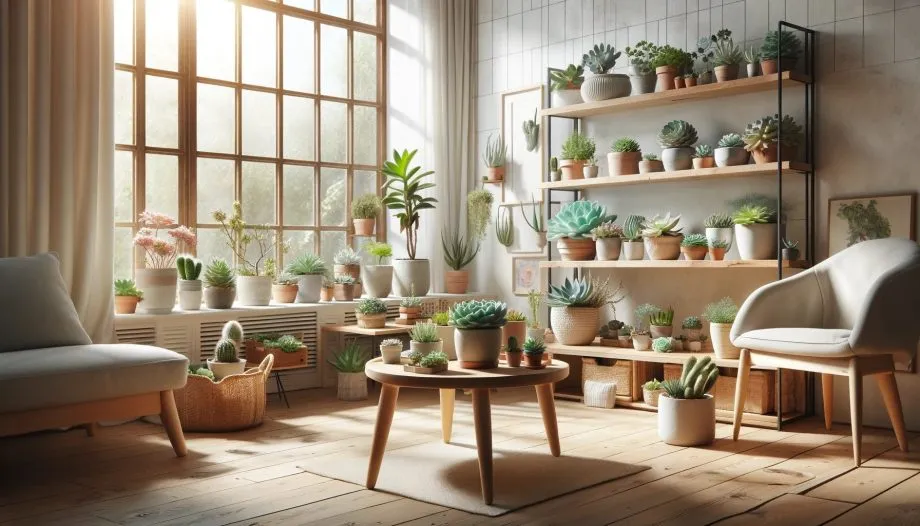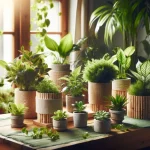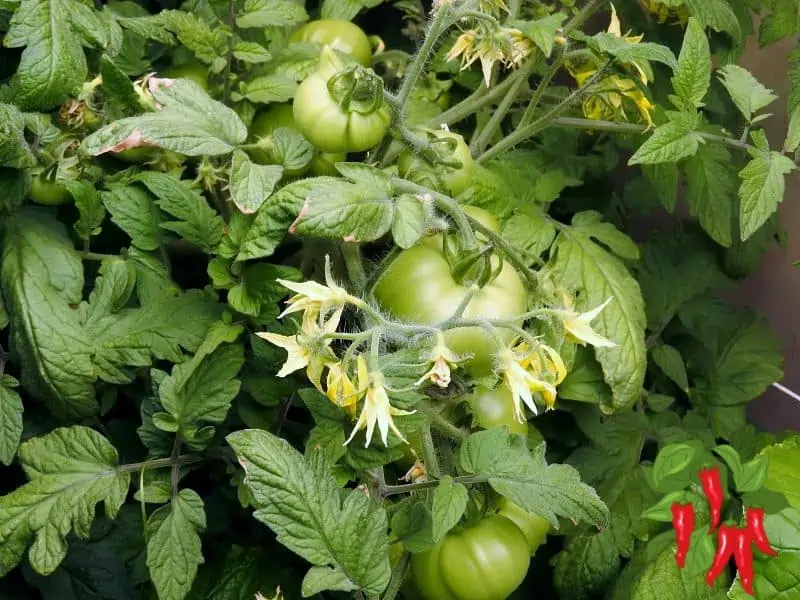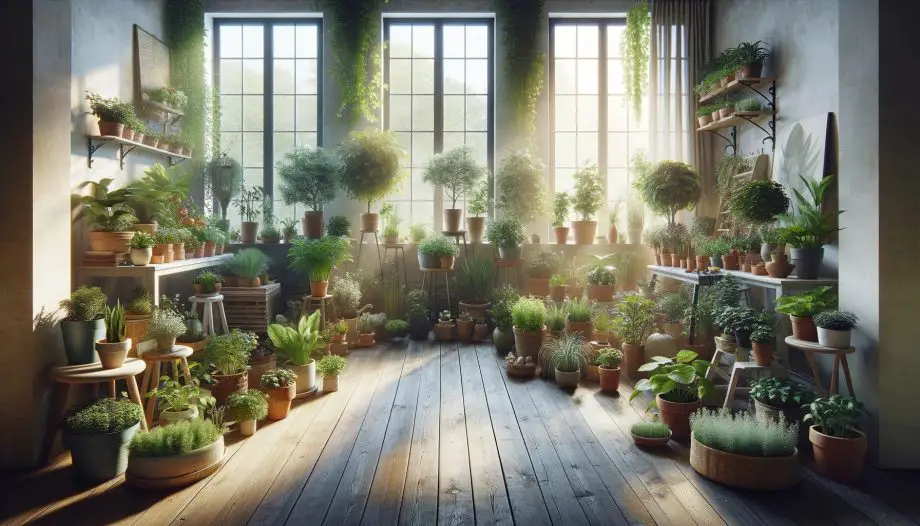This post may contain affiliate links. If you buy something from one of our links we may earn a commission. Thanks

Dive into the world of indoor succulent care for beginners with our easy-to-follow guide. Make your apartment greener today!
Indoor Succulent Care Key Takeaways:
- Indoor Succulent Care involves choosing the right succulent.
- Using well-draining soil.
- Place them in bright, indirect sunlight.
- Water using the soak-and-dry method or bottom watering
- Letting the soil dry completely between waterings.
- Ensuring good airflow around the plants.
I. Indoor Succulent Care for Beginners
Hey there! Ready to add a splash of green to your apartment? Succulents are the perfect pals for that!
These little guys are not just cute; they’re super easy to take care of, making them a top pick for indoor gardeners everywhere.
Simplicity in Care: Chill Vibes Only
Guess what? Taking care of succulents indoors is a breeze. Whether you’re a total newbie to gardening or you’re always on the go, these tough little plants are just the ticket.
They don’t ask for much, just a cozy spot in your apartment and a little TLC.
Starting Your Indoor Succulent Garden: Let’s Get Growing!
Ready to get started? Awesome! In this guide, we’re diving into the fun and easy world of succulent care.
We’ll chat about picking the right succulents for your space and give you the lowdown on what they need to thrive.
Before you know it, you’ll have a flourishing indoor succulent garden that’s all your own.
Creating a Green Haven in Your Home: Your Personal Oasis
Dreaming of turning that dull corner into a mini jungle? Or maybe you want to deck out your whole apartment with green goodness?
Whatever your vibe, succulents are here to make it happen. So let’s kick off this green adventure and fill your home with some leafy love!
II. Understanding Succulents: Your Indoor Green Buddies
So, what’s the deal with succulents? Well, these cool plants are like little water-storing champions.
They’ve got this awesome ability to hold onto moisture in their leaves, stems, or roots, which makes them super tough and perfect for indoor life.
Nature and Characteristics of Succulents: The Juicy Details
Succulents are like the camels of the plant world. Their thick and fleshy parts aren’t just for show; they’re all about saving water for a non-rainy day.
This means they’re pretty chill about dry air and don’t mind if you forget to water them now and then.
Adaptability to Indoor Environments: Easy Peasy
One of the best things about succulents is that they’re not fussy. They’re cool with different light setups, from bright spots to shadier corners, so you can pop them just about anywhere in your apartment.
Varieties Suitable for Indoor Living: Pick Your Plant
Not all succulents are the same, so it’s all about picking the right ones for your home.
Some top picks for indoor vibes include Aloe Vera, Snake Plants, and Echeverias. Each one brings its own style and pop of color to your space.
Why Succulents are Ideal for Apartments: The Perfect Match
Succulents are pretty much made for apartment living. They’re compact, grow slow, and don’t ask for much, making them a dream for anyone who’s short on space or time.
The Resilience Factor: Tough as Nails
These little green troopers are all about bouncing back. Missed a watering? No sweat, they’ll recover like champs.
It’s this kind of resilience that makes them a top choice for gardening newbies or jet-setters.
So there you have it! Getting to know your succulents is the first step to creating an awesome indoor garden. With their easy-going nature an
25 Types of Succulents Table
Here’s a table of 25 types of indoor succulents suitable for apartments, along with their soil, watering, and light requirements:
| # | Succulent Type | Soil Requirement | Watering Requirement | Light Requirement |
|---|---|---|---|---|
| 1 | Aloe Vera | Well-draining, sandy soil | Water deeply but infrequently | Bright, indirect light |
| 2 | Snake Plant | Free-draining potting mix | Allow soil to dry between waterings | Low to bright light |
| 3 | Echeveria | Porous soil with good drainage | Soak and dry method | Full to partial sunlight |
| 4 | Jade Plant | Soil with good drainage | Water when soil is dry to the touch | Bright, indirect light |
| 5 | Zebra Plant | Well-draining, sandy soil | Water moderately | Bright, indirect light |
| 6 | Christmas Cactus | Well-draining, rich in organic material | Keep evenly moist | Bright, indirect light |
| 7 | Burro’s Tail | Well-draining soil | Water thoroughly when soil is dry | Bright, indirect light |
| 8 | Crown of Thorns | Fast-draining soil | Allow to dry between waterings | Full sunlight |
| 9 | Pincushion Cactus | Sandy, well-draining mix | Water sparingly | Full sun to partial shade |
| 10 | Lithops | Well-draining, sandy or gravelly mix | Minimal watering | Bright light |
| 11 | Haworthia | Succulent mix or sandy soil | Water when soil is dry | Bright, indirect light |
| 12 | Sempervivum | Well-draining, gritty soil | Water infrequently | Full sun to partial shade |
| 13 | String of Pearls | Well-draining, sandy soil | Water sparingly | Bright, indirect light |
| 14 | Kalanchoe | Well-draining soil | Allow soil to dry between waterings | Bright light |
| 15 | Panda Plant | Well-draining mix | Let soil dry before watering | Bright to low light |
| 16 | Moon Cactus | Well-draining cactus mix | Moderate watering | Bright, indirect light |
| 17 | Gasteria | Well-draining, sandy soil | Water moderately | Low to moderate light |
| 18 | Sedum | Well-draining soil | Water when dry | Full sun to partial shade |
| 19 | Ghost Plant | Well-draining soil | Water sparingly | Full sun to partial shade |
| 20 | Flaming Katy | Well-draining soil | Water when soil feels dry | Bright light |
| 21 | Agave | Well-draining, sandy mix | Water sparingly | Full sun |
| 22 | Bunny Ear Cactus | Sandy, well-draining soil | Water moderately | Full sun |
| 23 | Rosary Vine | Well-draining soil | Allow soil to dry out between waterings | Bright, indirect light |
| 24 | Donkey’s Tail | Well-draining soil | Water thoroughly when dry | Bright, indirect light |
| 25 | Fishbone Cactus | Well-draining, rich soil | Keep soil evenly moist | Bright, indirect light |
This table provides a quick reference for choosing succulents based on your apartment’s conditions and your gardening preferences.
Remember, each succulent has its unique needs, so it’s always good to research a bit more about the specific type you’re interested in.
III. Choosing an Appropriate Succulent for Your Apartment
Picking the perfect succulent for your apartment is crucial for its happy growth and overall health.
Not all succulents are cut out for indoor living, you know.
The amount of light you’ve got and how much space you can spare are big deals when figuring out which succulents will vibe best in your place.
So, let’s dive into some cool succulent varieties that love hanging out indoors and chat about what kind of light they’re into.
Best Indoor Succulents for Low Light
- Aloe Vera: Famous for its healing properties, loves soaking up bright, indirect sunlight but is cool with a bit of shade too. That makes it a great plant buddy for various nooks around your apartment.
- Snake Plant: Famous for its resilience and low-maintenance vibe, digs bright light but can chill in dimmer spots too. With its tall, sleek look, it’s a fab addition to any room.
Succulents for Brighter Spaces
- Echeverias: These rosette-shaped succulents love bright, indirect sunlight. If you have a spot that receives plenty of light, Echeverias can be a colorful choice.
- Jade Plant: With its thick, woody stems and oval-shaped leaves, the Jade Plant prefers bright light. It can be a long-lived addition to your indoor garden.
Adapting to Your Indoor Environment
Understanding Light Needs:
Getting the light just right for your succulents is super important. If you’ve got a spot that gets lots of light, like near a south-facing window, that’s perfect for sun-loving varieties.
But if your place is a bit on the dim side, don’t worry—there are succulents like certain Aloes or Haworthias that can totally handle lower light.
Space Considerations:
Not all succulents are into the same kind of personal space. Some, like the Snake Plant, grow tall and slim, so they can squeeze into tighter spots.
But then you’ve got the Echeverias, which like to spread out a bit more, so they’ll need some extra elbow room.
Just keep in mind how your succulent likes to grow when you’re picking its spot.
Creating the Perfect Match
- Choose a succulent that not only fits your light conditions but also complements your personal style and the aesthetic of your apartment.
- Remember, the key to a happy indoor succulent is matching its needs with your indoor environment, ensuring a thriving and beautiful addition to your home.
Choosing the right succulent for your apartment doesn’t have to be a daunting task. By understanding the specific needs of different varieties and matching them to the conditions in your home, you can create a thriving indoor garden full of life and beauty.
IV. Selecting the Right Container: A Key to Succulent Success
Choosing the perfect container is a big deal when it comes to caring for your indoor succulents.
It’s not just about looks; the right pot is essential for your plant’s health and happiness, especially in an apartment setting.
Importance of Proper Container Size
- Shallow Pots Rule: Succulents are all about that shallow pot life. Their roots don’t dive deep, so a deep pot just means extra soil and extra water, which can spell trouble (hello, root rot). Stick to pots that are just a tad bigger than your plant.
- Size Matters for Growth: It’s a Goldilocks situation with pot size. Too small, and your succulent feels cramped. Too big, and you’ve got a soggy situation. Aim for just right.
Choosing Well-Draining Pots
- Drainage is Everything: Succulents hate soggy feet. Make sure your pot has drainage holes so excess water can make a quick exit, keeping those roots happy and healthy.
- Material Magic: Terracotta and ceramic pots are the go-to for succulents. They’re like breathable workout gear for your plants, letting air flow and keeping moisture in check.
Additional Considerations
- Style Meets Function: Sure, your pot needs to do its job, but it should also look good doing it. Pick a pot that vibes with your décor and shows off your personal style.
- Mix and Match: Your pot and potting mix should be BFFs. Go for a well-draining mix that’s made for succulents, and make sure your pot is on board with the plan.
Finding the Perfect Pot for Your Indoor Succulents: A Fine Balance
Selecting the right container is all about finding that sweet spot between function and fashion.
With the right well-draining pot, you’ll set the stage for your succulents to thrive and bring a burst of green to your apartment life.
V. The Importance of Well-Draining Potting Mix
The Foundation of Healthy Succulents
Alright, let’s talk dirt – specifically, the kind your indoor succulents are going to love.
These desert dwellers are all about that quick-draining, don’t-hold-onto-water-for-too-long kind of soil.
In your apartment, you’ll want to recreate their natural, arid home to keep them thriving.
Why Well-Draining Soil is a Must-Have
- Root Rot, Be Gone: The main reason for choosing a well-draining mix? To keep root rot at bay. Succulents and soggy soil are not friends. If their roots are swimming for too long, it’s trouble.
- Desert Vibes: A well-draining mix is like bringing a piece of the desert into your home. It’s what succulents are used to, and it’s what helps them stay healthy and happy.
Your Options for the Perfect Soil Mix
- Off-the-Shelf Magic: You can find plenty of ready-made succulent and cactus mixes out there. They’re specially formulated to drain quickly and give your succulents the right kind of home.
- DIY Mixes: Feeling crafty? Mix up your own batch of succulent soil. A popular recipe is mixing regular potting soil with some sand, perlite, or pumice for that extra drainage kick.
Why I Swear by a 50/50 Mix of Coco Coir and Perlite
- The Dynamic Duo: Coco coir and perlite are like the Batman and Robin of succulent mixes.
- Coco coir, a sustainable material, holds just the right amount of moisture without getting soggy.
- Perlite, on the other hand, is all about improving drainage and keeping things airy.
- Apartment-Friendly Mix: For succulents living the apartment life, this mix is a winner. It’s got the perfect balance of moisture retention and drainage, mimicking their natural habitat and reducing the risk of root rot.
Using a 50/50 Mix of Coco Coir and Perlite
- Benefits of Coco Coir and Perlite Mix: This combination is excellent for succulents because it provides two key elements: good aeration and quick drainage.
- Coco coir is an organic, renewable material that retains just enough moisture without becoming waterlogged, while perlite is a volcanic glass that improves drainage and soil structure.
- Why It’s My Go-To Mix: This mix is particularly beneficial for apartment-dwelling succulents as it ensures they get the right balance of moisture and air.
- I use it for all my succulents because it closely mimics their natural growing conditions, reducing the risk of root rot and promoting healthy growth.
Nailing the Potting Mix: Your Ticket to Succulent Success
Getting the potting mix right is a big deal in the world of indoor succulent care. Whether you go for a commercial mix or whip up your own, the key is ensuring it’s well-draining.
This sets the stage for your succulents to flourish and brings a piece of the desert right into your apartment. Trust me, your succulents will thank you!
VI. Positioning Your Succulents: Finding the Perfect Spot
Choosing the perfect spot for your succulents in your apartment is key to their happiness and growth.
Succulents love a good balance of light to really shine, so finding that sweet spot is both important and kinda fun.
Understanding Light Requirements
- Bright, Indirect Sunlight is the Sweet Spot: Most succulents are fans of bright, indirect sunlight. Direct sunlight can be a bit too intense and might leave your plants with sunburned leaves.
- Keep ‘Em Moving: Giving your succulents a little spin now and then helps them grow evenly, so they don’t start reaching for the light.
Finding the Right Spot in Your Apartment
- South-Facing Windows Are Your Friends: These windows are usually the MVPs for succulents, offering consistent light throughout the day.
- East or West-Facing Windows: These spots can be great too, providing a good amount of light without the full force of the midday sun.
Adjusting to Your Apartment’s Light Conditions
- Bring in the Artificial Light: If your place is on the darker side, don’t be shy about using grow lights. They can give your succulents the light they need to stay happy.
- Keep an Eye on Them: Watch how your succulents react to their spot. If you see them stretching out or losing their vibrant color, they might be asking for more light.
Protecting from Too Much Sun
- Sheer Curtains for the Win: If you’ve got a super sunny window, sheer curtains can help soften the light and keep your succulents from getting too toasty.
- Watch Out for Hot Spots: Be careful about placing your succulents near glass that could amplify the sun’s rays and heat things up too much.
Finding the perfect spot for your succulents is all about giving them enough light while keeping them comfy.
By getting to know your apartment’s light and making adjustments as needed, you can create the perfect environment for your indoor succulent garden to thrive.
VI. Positioning Your Succulents: Finding the Perfect Spot (Expanded)
Creating a thriving indoor succulent garden is all about picking the right plants and finding the perfect spot in your apartment for them to chill.
Here’s a handy guide to help you figure out where your succulents will be happiest, so they get just the right amount of light and love.
Maximizing Natural Light
- Window Sills: These are prime real estate for your succulents, especially if they’re sun-loving types. Just watch out for too much direct sun, which might give them a sunburn.
- Light Changes: The light in your apartment changes throughout the day. Morning light is softer, so an east-facing window is great, while a west-facing window gives you more light in the afternoon.
Adapting to Limited Light
- Grow Lights: If your place is on the darker side, grow lights are like a sun substitute for your succulents. They mimic natural sunlight and keep your plants happy and healthy.
- Reflective Surfaces: Use mirrors or shiny surfaces to spread light around, especially in dim corners. It’s like giving your plants a little extra sunshine.
Balancing Light and Temperature
- Avoid Extremes: Succulents like light but not extreme heat or cold. Keep them away from radiators or drafty spots.
- Seasonal Moves: As the seasons change, so does the light. Be ready to shuffle your succulents around to catch the best rays.
Creative Placement Ideas
- Hanging Planters and Shelves: Go vertical! Hanging planters or shelves near windows are perfect for saving space and adding some green flair.
- Grouping: Mix and match different succulents for a cool display. Grouping them together lets you use light more efficiently.
Troubleshooting Common Issues
- Stretching: If your succulents are reaching for the light, they might need more of it. Move them closer to a light source or consider a grow light.
- Color Changes: Some succulents change color with different light levels. If the color change is drastic, it might mean they’re getting too much direct sun.
By paying attention to your succulents’ light needs and adjusting their spot in your apartment, you’ll have a bunch of happy, healthy plants.
Keep an eye on them and tweak their placement as needed, and you’ll have a thriving indoor garden in no time!
VII. Watering Techniques: The Soak and Dry Method
How Much Water Do Succulents Need?
Succulents are like the camels of the plant world—they store water in their leaves, so they don’t need a drink as often as other houseplants.
If you’re the type who might forget to water your plants now and then, succulents are your forgiving friends.
But when it comes to watering, there’s a right way to do it.
The soak-and-dry method is a big hit among succulent enthusiasts because it mimics the natural rainfall patterns these plants love.
Soak and Dry: What’s the Deal?
- Soak It Up: When it’s watering time, give your succulent a good soak until water drains out the bottom of the pot. This ensures the water reaches all the roots.
- Dry Spell: After watering, let the soil dry out completely before watering again. This break from water is what succulents are all about.
Why the Dry Spell Matters
- Nature’s Way: In their natural habitat, succulents get a good rain and then chill out in dry conditions for a while. Mimicking this at home keeps them happy.
- Roots Love It: Dry periods encourage roots to grow deeper, making for a stronger, healthier plant.
Top Tips for the Soak and Dry Method
- Check the Soil: Before watering, stick your finger in the soil or use a moisture meter to see if it’s dry.
- Seasonal Shifts: In winter, when succulents are just hanging out and not growing much, they need less water.
- Pot Matters: The type and size of your pot affect how quickly the soil dries. Terracotta pots and smaller pots dry out faster.
Common Oopsy-Daisies
- Overwatering: More succulents meet their maker from too much water than too little. When in doubt, hold off on watering.
- Spray Bottle No-No: Misting succulents with a spray bottle isn’t the best move. It doesn’t get enough water to the roots and can lead to weak growth.
Bottom Watering: A Cool Alternative
Bottom watering is a nifty way to water your succulents, especially if you want to avoid getting water on the leaves. Here’s how it’s done:
- Set the Stage: Fill a tray with water deep enough to reach the bottom of your pots.
- Dip ‘Em In: Place your pots in the tray and let them soak up water through the drainage holes.
- Time It Right: Let them sit for about 30 minutes to an hour, so the soil gets a good drink from the bottom up.
- Moisture Check: After you take the pots out, check the topsoil. It should feel moist but not swampy.
- Drain Away: Let any excess water drain out before putting your succulents back in their usual spot.
Bottom watering is great for keeping leaves dry and making sure all the soil gets evenly moist.
With these watering techniques, you’ll be well on your way to keeping your succulents looking sharp and feeling fine!
VIII. How To Care for Succulents Indoors Without Drainage
Watering Challenges in Non-Draining Containers
So, you’ve got a cute decorative pot without drainage holes, and you want to plant a succulent in it? No problem!
While non-draining containers can be a bit tricky (hello, root rot!), there are ways to make it work.
Understanding the Risk of Non-Draining Containers
- Water Accumulation: The main issue with these pots is that water can pool at the bottom, making the soil too wet for comfort.
- Lack of Airflow: Also, these containers don’t allow much air to get to the roots, which isn’t ideal for succulent health.
Watering Techniques for Non-Draining Containers
- Water Sparingly: Less is more here. You want to moisten the soil without turning it into a swamp.
- Use a Syringe or Dropper: This helps you control how much water you’re adding, so you don’t go overboard.
- Monitor Soil Moisture Closely: Stick your finger in the soil every now and then to see if it’s dry. Only water when it’s completely dry.
Layering for Improved Drainage
- Creating a False Drainage Layer: Pop some gravel, pebbles, or activated charcoal at the bottom of the container before adding soil. This can help keep water away from the roots.
- Using Lightweight Soil: Go for a soil mix that’s light and drains well, like a 50/50 mix of coco coir and perlite.
Signs of Overwatering to Watch For
- Soft, Mushy Leaves: If your succulent’s leaves feel like overripe tomatoes, you might be overwatering.
- Leaf Drop or Discoloration: Leaves falling off or changing color? Could be a sign of too much water.
Alternative Solutions
- Drill Drainage Holes: If you’re handy, you can try adding drainage holes to the pot.
- Transplanting: Sometimes, it’s just easier to move your succulent to a pot with proper drainage.
Final Thoughts
Watering succulents in pots without drainage holes takes a bit of extra care, but it’s totally doable.
Keep an eye on the water and soil, and your succulent will be just fine. And if all else fails, there’s no shame in switching to a pot with drainage!
IX. Maintaining Your Succulents: Keeping Them Clean and Healthy
So, you’ve got your succulents all cozied up in your apartment, but the TLC doesn’t stop there.
Keeping them clean and ensuring they’ve got room to breathe are just as important as the right watering and lighting.
Stayin’ Clean
- Dust Bunnies Beware: Just like your coffee table, succulents can collect dust. But unlike your coffee table, dust can get in the way of their sunbathing. A soft brush or a gentle puff of air can do wonders in keeping them dust-free.
- Gentle Touch: For those hard-to-reach spots, a soft, damp cloth is your friend. Just be gentle, as succulent leaves can be delicate.
Breathe Easy
- Airflow is Key: Good airflow helps keep those pesky fungal diseases at bay and keeps the soil from staying too damp.
- Glass Houses: While glass containers can look chic, they’re not always the best for airflow. If you’re set on using them, just be mindful of the potential challenges.
Alternative Digs
- Porous Pots: Terracotta or unglazed ceramic pots are like breathable workout gear for your succulents, allowing air and moisture to move through more easily.
- Room to Grow: Don’t cram your succulents in too tight. Giving them some space helps air circulate better.
Routine Check-Ups
- Inspect and Detect: Regularly check your succulents for any signs of trouble, like pests or diseases. Catching problems early can save a lot of headaches.
- Trim and Tidy: Snipping off any dead or dying leaves keeps your succulents looking sharp and can help prevent issues from spreading.
By keeping your succulents clean and ensuring they have plenty of airflow, you’ll help them look their best and stay healthy.
With just a bit of extra care, your succulent buddies will thrive in their cozy indoor home.
X. Dealing with Common Problems: Pests and Diseases
Even the most well-cared-for succulents can run into pest or disease problems from time to time. Staying on top of these common issues and knowing how to tackle them can keep your plant pals looking and feeling their best.
Common Pests in Succulents
- Gnats: These are often a sign of overwatering. Gnats are attracted to moist soil, so ensuring your soil dries out between waterings is key. If gnats appear, reduce watering and consider using a soil drying treatment or a gnat pesticide.
- Mealybugs: These pests look like small, white cottony spots on your plants and can be quite harmful. They suck the sap from succulents, weakening them over time.
Succulents can be prone to aphids and spider mites, especially when grown in conditions that are not ideal.
- Aphids are small, sap-sucking insects that can cluster on new growth or under leaves. They often appear in green, black, brown, or pink. Aphids can cause distorted growth and leave a sticky residue called honeydew, which can lead to sooty mold.
- Spider Mites are tiny, spider-like pests that can be more challenging to spot. They usually create fine webs around the affected areas of the plant. Spider mites typically cause yellowing or speckled leaves and can lead to significant damage if left untreated.
To manage these pests, you can use insecticidal soaps or neem oil, ensuring to follow application instructions carefully.
Regular inspection and maintaining healthy growing conditions are key to preventing infestations.
Effective Pest Control Methods
- Isolation: If you notice pests on one plant, isolate it from your other plants to prevent the spread.
- Alcohol Treatment: A common treatment for mealybugs is dabbing them with a cotton swab dipped in rubbing alcohol. This method is effective and safe for the plant.
- Insecticidal Soaps: These can be used for treating a variety of pests. They are generally safe for succulents if used as directed.
- Neem oil: Neem oil is effective against a wide number of insect pests.
Preventing Pest Infestations
- Regular Inspections: Regularly inspect your succulents for signs of pests, especially if you bring new plants into your home.
- Cleanliness: Keep the area around your succulents clean and free of plant debris, which can harbor pests.
Dealing with Diseases
- Root Rot: Overwatering can lead to root rot, a common disease in succulents. If you suspect root rot, remove the plant from its pot, trim away any blackened or mushy roots, and repot in fresh, dry soil.
- Fungal Diseases: These can appear as spots on leaves or stems. Improve airflow around the plant and reduce humidity to combat fungal diseases. Fungicides can also be used as a treatment.
Regularly monitoring your succulents and taking quick action at the first sign of trouble can prevent many common problems.
By understanding the signs of pests and diseases and knowing how to effectively deal with them, you can ensure your succulents remain healthy and beautiful.
XI. Repotting Succulents: When and How
Repotting your succulents is like giving them a fresh new home to stretch their roots! Here’s a chill guide to make sure your green buddies keep thriving:
When to Give Your Succulents a New Pad
- If you see roots peeking through drainage holes, your plant wobbling because it’s top-heavy, or the soil drying out super fast, it’s time for a move.
- Spring and early summer are the best times to repot. That’s when your succulents are in the mood to grow and can settle into their new digs quickly.
How to Repot Your Succulents
- Pick a new pot that’s a tad bigger than the old one, with good drainage. Shallow pots are the way to go for succulents.
- Start with a layer of succulent-friendly potting mix in the new pot.
- Gently coax your succulent out of its old pot, taking care not to mess up the roots.
- Check out the roots and snip off any that look dead or too long. This gives your plant a little growth boost.
- Place your succulent in the center of the new pot and add more soil around it to keep it stable.
- Hold off on watering for a few days to let the roots chill and heal up.
Extra Tips for Happy Succulents
- Go for a potting mix that drains well. Succulents aren’t fans of soggy feet.
- If your succulent is super cozy in its pot (a.k.a. root-bound), gently loosen up the roots before repotting. If they’re really tangled, you might need to trim them a bit.
Repotting doesn’t have to be a hassle. Just follow these simple steps, and your succulents will have the space and nutrients they need to keep on growing and making your indoor garden awesome!
FAQs on Indoor Succulent Care
Got questions about keeping your indoor succulents happy and healthy? You’re not alone!
Here’s a quick FAQ to help beginners like you dive into the world of succulent care.
From how much to water to where to place them, we’ve got practical tips to make sure your green buddies thrive indoors.
Q. How do you keep succulents alive indoors?
A. To keep succulents alive indoors, ensure they receive enough light, typically bright, indirect sunlight.
Use well-draining soil and pots with drainage holes. Water using the soak and dry method or bottom water, allowing the soil to dry out completely between waterings. Avoid overwatering and provide good airflow around the plants.
Q. Where is the best place to put succulents indoors?
A. The best place to put succulents indoors is near a window that gets plenty of bright, indirect sunlight.
South-facing windows are usually ideal. If natural light is limited, consider using grow lights.
Q. Do succulents need direct sunlight indoors?
A. Most succulents prefer bright, indirect sunlight indoors. While some can tolerate direct sunlight, it’s important to acclimate them gradually to prevent sunburn.
Direct sunlight through windows can sometimes be too intense for certain succulent varieties.
Q. Can succulents live inside without sunlight?
A. Yes, succulents can live inside without direct sunlight. They adapt well to indoor environments and can thrive in bright, indirect light.
Some varieties can even tolerate low-light conditions. However, for optimal growth and health, providing a source of bright, indirect light, such as near a window or using artificial grow lights, is recommended.
Q. How often should I water my succulents indoors?
A. Water your indoor succulents once the soil is completely dry, which typically happens every 1-2 weeks, depending on the environmental conditions.
It’s important to adjust the watering frequency based on the season, with less frequent watering in the winter.
Q. Should I pull dead leaves off succulents?
A. Yes, you can gently pull off dead or dry leaves from the base of your succulents. This helps to keep the plant healthy and prevent any rot or pest infestation.
Q. Should I mist my indoor succulents?
A. Generally, it’s not recommended to mist indoor succulents as they need the soil to dry out completely between waterings. Misting can lead to insufficient water for the roots and increase the risk of fungal diseases.
Q. Do you water succulents from the top or bottom?
A. Water succulents from the top, ensuring that the water reaches the roots.
The soak-and-dry method is where you thoroughly water the soil until it’s soaked and then let it dry out completely.
You can also bottom water succulents effectively it allows leaves to stay dry.
Q. How do I know if my succulent needs water?
A. Check the soil moisture by sticking your finger an inch into the soil. If it’s dry, it’s time to water. Other signs include wrinkled or shriveled leaves, which indicate that the succulent is using the water stored in its leaves.
Q. How do you make succulents thrive?
A. To make succulents thrive, provide them with bright, indirect sunlight, use well-draining soil, and water them properly using the soak-and-dry method. Ensure good airflow, maintain moderate temperatures and fertilize during the growing season with a succulent-specific fertilizer.
Remember, each succulent species may have its unique care requirements, so it’s always beneficial to research the specific needs of the varieties you have.
XII. Indoor Succulent Care for Beginners Conclusion
We’ve come to the end of our guide to indoor succulent care. Let’s quickly recap the essentials for a thriving succulent haven in your apartment:
- Picking the right succulent is just the start. Think about their light needs and find a spot in your place that gets bright, indirect sunlight.
- Don’t forget to focus on the potting mix and container – good drainage is key for your succulents’ health.
For more tips on apartment gardening, check out our guide to Indoor Apartment Gardening: 15 Point Comprehensive Guide
Watering Wisely
- Getting watering right is super important. Use the soak and dry method or bottom watering, and make sure the soil dries out between waterings.
- Keep an eye on the challenges of non-draining containers and make sure your succulents are clean and well-aired to dodge pests and diseases.
- And remember to repot when needed so your plants have room to grow and fresh soil to thrive in.
Enjoy the Journey
- Most importantly, have fun with it! Growing and caring for your succulents is a rewarding experience that adds a splash of beauty to your space.
- If you’re new to this, embrace the journey. Succulents are a great intro to gardening and add a unique touch to your apartment.
- So, cherish the process of looking after your succulents and watch them flourish.
Indoor gardening with succulents is a delightful hobby. This guide aims to help you through each step, from choosing your succulents to nurturing them into a vibrant indoor garden.
Happy gardening, and relish the wonderful world of succulents in your apartment!
























